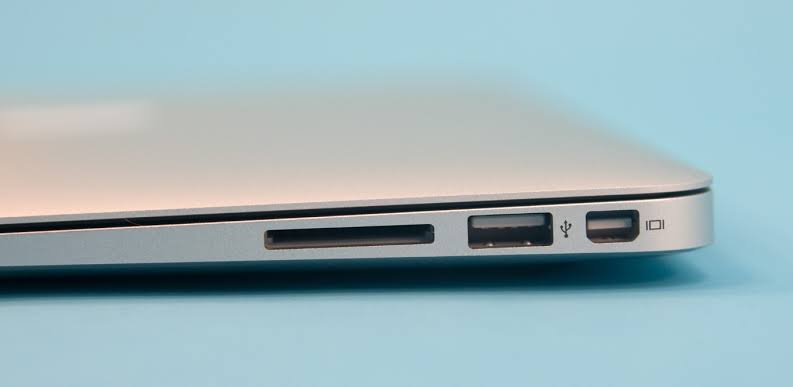“I inserted my SanDisk SD card to my Mac in order to transfer some important files, but the SD card is not showing up. I couldn’t find it in the Finder’s section either. Please, what could be the problem? I need to access the files urgently.”
SD cards can sometimes be unreliable. You connect them to your Mac and find out that they are not showing up.
This puts you at the risk of losing all your files saved and backed up on them. But, don’t worry; your troubleshooting guide is here. In this article, we will explain the causes and provide 5 solutions to SD cards not showing up on Mac.

Finding how to open an SD card on Mac without knowing the root cause of the issue can be difficult. So quickly, let’s go over the most possible reasons why your SD card does not show on Mac.
For a MacBook not reading SD card, there are a couple of fixes you can try. Let’s examine them one after the other, providing the step-by-step processes for each:
Ordinarily, when you insert an SD card into your Mac, it should display in the Finder’s sidebar. But if it does not, that means the preferences for external disks have been disabled. To avert Mac not reading SD card due to changes in Finder, you have to enable external disks.
👉Below are the steps for fixing SD card not showing up in Finder:
After doing this, if your SD card does not show on Mac, the problem might just be with the card reader or USB port.
Mac computers are manufactured with card reader slots, meaning you have to insert your SD card into a fitting card reader before connecting to your Mac.
When you have a “Mac not recognizing SD card” issue, it could be that the card reader is not working. There are several solutions to this. They include:
1️⃣Solution 1: The card reader might be locked. If that’s the case, eject it and adjust the lock slider. Then, reinsert it into your Mac.
2️⃣Solution 2: The card reader might be faulty or not. Simply follow these steps to be sure:
3️⃣Solution 3: The USB port is faulty. If you’ve confirmed that the card reader is 100% functional, the problem could be with the USB port it’s inserted in. Test the card reader on other devices to be certain.
Sometimes you may be struggling with how to open an SD card on Mac because the card has been formatted to a file system that’s not supported by macOS. The major file systems compatible with Mac devices are HFS+, APFS, FAT32, and exFAT.
👉Follow these steps to check the SD card file system:
Note that reformatting the SD card will erase all your data, so you should have a recovery method in place. For example, if you have important files on the card, such as cherished photos, you should learn how to recover deleted pictures on Mac. And for videos, you can explore one of the best 10 video recovery software.
An outdated macOS version doesn’t always support newer hardware or may have bugs that prevent recognition of external devices, such as SD cards. To fix this, you need to update your macOS to the latest version. This may solve your “SD card not showing up Mac” issue, as well as install higher grade features like better security, speed, compatibility, and remedies for bugs.
👉Here are the steps for updating macOS to the latest:
If the SD card drivers on your Mac are outdated or corrupted, the SD card won’t be recognized. Thus, you need to renew the drivers for your SD card to display.
👉Follow these steps to update the SD card drivers on your Mac:
Before attempting to repair your faulty SD card, it’s imperative that you recover your data to another storage device first. This is because your SD card is at risk of losing all stored data during the repair process. The memory card could be corrupted and any attempt to fix it can lead to complete data loss.
To do this efficiently, you need professional SD recovery software, like ONRECOVERY. Contrary to popular opinion that all data recovery software is expensive, ONERECOVERY is an open source data recovery software for Mac, meaning you can use it freely. It’s popularly revered for its high success rate, ease of use, and capability to restore data regardless of the complexities.
👉To recover your SD card data through ONERECOVERY, follow these steps:
SD card not showing up Mac has many possible causes and solutions. In this article, we’ve recommended 5 proven fixes for Mac not recognizing SD cards. And to recover data before repairing your faulty SD card, you can use ONERECOVERY. It will scan and restore all your lost data, including the deleted, overwritten, and corrupted ones.
Check out these additional questions and answers on how to open an SD card on Mac.
1️⃣How to View an SD Card on Mac?
When you connect your SD card to Mac, you can view it in 2 ways: The Desktop or Finder.
Note: The SD card may appear as “Untitled” if it wasn’t previously named.
2️⃣How to Prevent SD Cards Not Showing Up or Recognized Again?
These are cogent tips you to ensure SD cards always show up on Mac:
Losing your iMessages can be very painful, especially when you need to refer to some…
“I’ve somehow deleted the Downloads folder on my Mac while trying to create space. I’m…
“I took videos of my children when I taught them how to walk and when…
Does your MacBook Air refuse to boot up? The prospect of losing all your music…
Losing photos that were difficult to capture often results in a person becoming frustrated, anxious,…
Did you lose an email on your Mac and you are trying to get it…